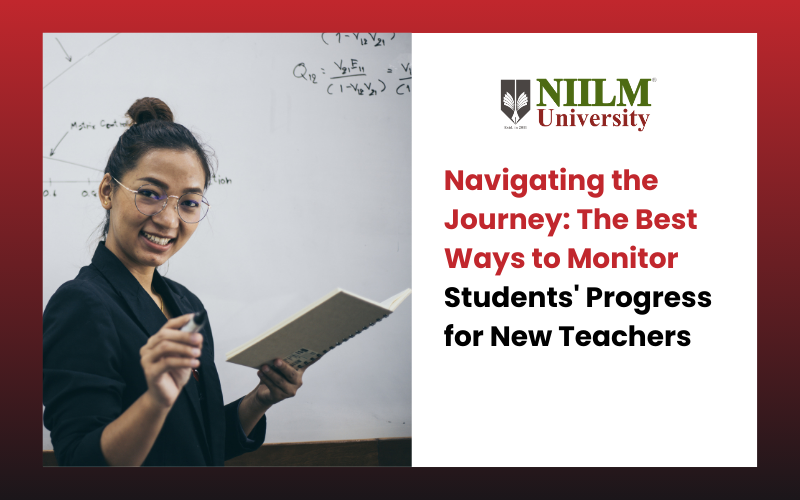Admission Enquiry

Learn effective methods for new teachers to monitor students' progress and ensure academic success in the classroom.
For new teachers, monitoring students' progress is not just a responsibility but a crucial aspect of effective teaching. Keeping track of students' academic growth, understanding their strengths and weaknesses, and identifying areas for improvement are essential for creating a supportive and inclusive learning environment. Here are some of the best ways for new teachers to monitor students' progress and ensure their success in the classroom.
1. Regular Assessments
Implementing regular assessments, both formative and summative, is key to monitoring students' progress. Formative assessments, such as quizzes, exit tickets, and class discussions, provide ongoing feedback on students' understanding and mastery of concepts. Summative assessments, such as tests and projects, allow teachers to evaluate students' overall learning and performance. By analyzing assessment data, new teachers can identify trends, track individual progress, and adjust their instructional strategies accordingly.
2. Observations and Classroom Participation
Observing students' behavior, engagement, and participation in the classroom provides valuable insights into their progress and learning styles. New teachers can use observation techniques such as anecdotal notes, checklists, or video recordings to document students' interactions, contributions, and attitudes towards learning. Observations help teachers identify areas of strength and areas needing improvement, as well as tailor instruction to meet students' individual needs.
3. Student Work Portfolios
Maintaining student work portfolios allows new teachers to track students' progress over time and showcase their accomplishments. Portfolios can include samples of student work, projects, assessments, and reflections on learning. By reviewing portfolios regularly, teachers can assess students' growth, provide feedback, and involve students in setting goals for their academic development. Portfolios also serve as a valuable tool for communication with parents and guardians about students' progress.
4. One-on-One Conferences
Conducting one-on-one conferences with students provides an opportunity for new teachers to establish rapport, build relationships, and gain insight into students' learning experiences. During conferences, teachers can discuss students' goals, strengths, challenges, and areas for growth. By listening actively, asking probing questions, and offering encouragement, teachers can support students' academic and personal development while fostering a sense of ownership and responsibility for their learning.
5. Technology Tools and Data Analysis
Utilizing technology tools and data analysis software can streamline the process of monitoring students' progress for new teachers. Learning management systems, digital assessment platforms, and data tracking software provide real-time access to student performance data, trends, and analytics. By leveraging technology, teachers can quickly identify areas of concern, differentiate instruction, and personalize learning experiences to meet the diverse needs of students.
6. Parent and Guardian Communication
Maintaining open and regular communication with parents and guardians is essential for monitoring students' progress and fostering a supportive learning environment. New teachers can communicate with parents through emails, phone calls, newsletters, or parent-teacher conferences to share updates on students' academic performance, behavior, and social-emotional development. By involving parents in their children's education, teachers can build partnerships, address concerns collaboratively, and support students' success both inside and outside the classroom.
Conclusion
Monitoring students' progress is a continuous and dynamic process that requires dedication, observation, and collaboration from new teachers. By implementing regular assessments, observing classroom participation, maintaining student work portfolios, conducting one-on-one conferences, leveraging technology tools, and communicating with parents, new teachers can gain valuable insights into students' learning and development. By staying proactive, flexible, and responsive to students' needs, new teachers can create a supportive and inclusive learning environment where all students have the opportunity to thrive and succeed.
Copyrights © 2024 NIILM UNIVERSITY. All rights reserved.